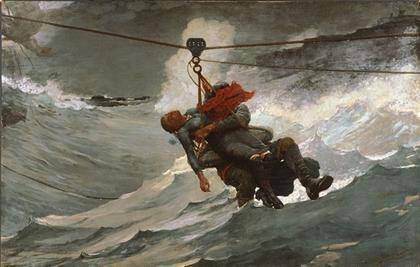
Sebastian Pether (English, 1790–1844).
Eruption of Vesuvius with Destruction of a Roman City, 1824.
Oil on canvas; frame with wood; attachments imitating lava.
Museum of Fine Arts, Boston, Grant Walker Fund

Andy Warhol (American, 1928–1987).
Mount Vesuvius, 1985.
Acrylic and silkscreen ink on linen.
The Andy Warhol Museum, Pittsburgh, Founding Collection.
© The Andy Warhol Foundation for the Visual Arts, Inc. / ArtistsRights Society (ARS), New York.
The Last Days of Pompeii at the Getty Museum ‘The Last Days of Pompeii: Decadence, Apocalypse, Resurrection’ presents Pompeii and the other Vesuvian sites as a modern fascination rather than focusing on their historical past. On view September 12, 2012–January 7, 2013.]]>
Source: Getty Museum
Organized around three themes— decadence, apocalypse, and resurrection—this exhibition addresses the potent and continuing legacy of Pompeii in the modern imagination.
“The variety of objects on display underscores our preoccupation with this major historical event,” explains Kenneth Lapatin, associate curator of antiquities at the J. Paul Getty Museum.. “We continually reshape the past to suit the needs of the present, and the Getty Villa itself is the perfect space for this exhibition, because the site is a re-imagined example of a building destroyed by Vesuvius.”
The Last Days of Pompeii: Decadence, Apocalypse, Resurrection begins withmodern representations of Pompeian decadence. The prevailing idea that the cataclysmiceruption that destroyed the Vesuvian cities in A.D. 79 was a justly deserved punishment forsins has pervaded popular consciousness through art and literature up to the present day. Thisnotion has inspired artists and provided a vehicle to present sensual scenes or subversivethemes in an acceptable setting. A highlight of this section is Francesco Netti’s most famouswork, “Gladiator Fight during a Meal at Pompeii” (1880, Naples, Museo di Capodimonte), whichdepicts the aftermath of a mortal combat held at a Pompeian banquet for the entertainmentof dissolute, drunken Romans, while ladies swoon after the victor.
Also on display are photographs by Wilhelm von Gloeden and Gugliemo Plüschow,some from Sir Lawrence Alma-Tadema’s personal archive, which record some of the bestknownmonuments at Pompeii populated by local youths staged in various states of undress.
Sebastian William Thomas Pether’s “Eruption of Vesuvius with Destruction of a RomanCity” (1824, Boston, Museum of Fine Arts) dramatically shows the volcano spewing lava ontothe ancient city, but his depiction of Roman architecture and figures in early-nineteenthcentury dress cross temporal boundaries. Also, embedded in the gilt frame are pieces of whatappears to be lava, but is actually trimmed wood burl. Thus, what was intended to addauthenticity to the imaginary scene is itself false. Alternatively, Andy Warhol’s “Mount Vesuvius”(1985, Pittsburg, Warhol Museum), with its vibrant palette and cartoonish effects, demonstratesthat serial reproductions and kitsch are not just hallmarks of Pop Art, but alsorelate to the proliferation of images of the famous volcano.
Related content
‘Luminous’ British watercolors at the Getty Museum (exhibition, 2011)
Follow us on:


